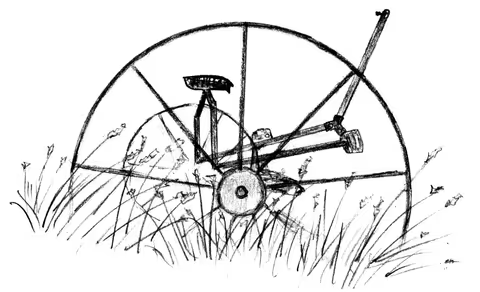The Mysterious Tree of Stoodley View
Share this page

inter sun produces a light like no other, and we are fortunate to have a had a number of perfectly clear days recently. On one such day, I realised soon after 3pm that the sun was fast disappearing from the valley and raced from our dark hillside across to the trees of John Wood above Keighley Road. On days like this the beech here are bathed in a gloriously rich orange light, deepening still further as the Heptonstall hillside’s shadow chases me up the hill. The only thing to do was to continue higher, up past Hurst Road and Stoodley View to the soggy fields above. I wasn’t the only person to realise this and looked across the fields to several other solitary figures or small parties crouched on walls or stiles to gaze at the finest of winter sunsets.
The warm orange glow picked out details I had not seen before; shapes in the broken down walls that criss-crossed the area; withered hawthorn trees draped with straggly ribbons, once bright but now come to look like litter; flocks of birds flitting acrossthe sun as no more than golden specks of lights. But most of all my eye was drawn by a distinctive tree at the end of Stoodley View, whose dense evergreen leaves flickered in the almost indiscernible wind and caught the same magical golden light. The more I looked, the more confused I became about what this unreal tree was, so I inched forward from wall to wall to get a closer look. Soon I was descending the rough bank above the houses, just as the sun finally dipped from my view beyond Horsehold Scout. The tree suddenly looked much darker and, though evergreen, definitely held leaves and not needles. And it was certainly a tree, not a sprawling shrub like the rhododendron.
The tree stood at the end of a garden and I was virtually upon it before I could see the rich orange-brown trunk with vertical strips of soft-looking bark. It is the sort I have seen many times in the forests of Scotland and, immediately concluding that the tree must by a cypress, I bid my retreat. Part of me started suddenly – but the cypress has needles, you fool! – so I turned back to the mysterious tree and gathered some of its shed leaves; narrow elliptical fingers not unlike ash leaves. What then was this beast?
It was my brother who gave me the answer as ever; the eucalyptus. An elegant and fascinating tree, but one that I had not expected to find on a bleak West Yorkshire hillside. Another visit, armed with a camera (why do I never carry it at the most magical times?), confirmed that it was indeed a eucalyptus. Above the cypress-like bark of its lower trunk, colourful brown-green strips danced up its boughs higher up looking like a cheap all-terrain camouflage. Huge peeled strips lay on the ground underneath and there was an undeniable red glow on this duller day. Its air was one of other-worldliness; at a time of year when all of our trees are either barren or impenetrable masses of dark needles, its light leaves hung in insubstantial bunches and fluttered beautifully on the breeze. And so it joins my list of favourite individual trees with the Granny Wood ash, the Dobroyd turkey oak, the Nutclough elm and the Owler Tor birch. I have been delighted to learn that I can see this tree from our garden, thus adding a new detail to the landscape I look upon every day and thought I knew so intimately. How much more there must be out there.
